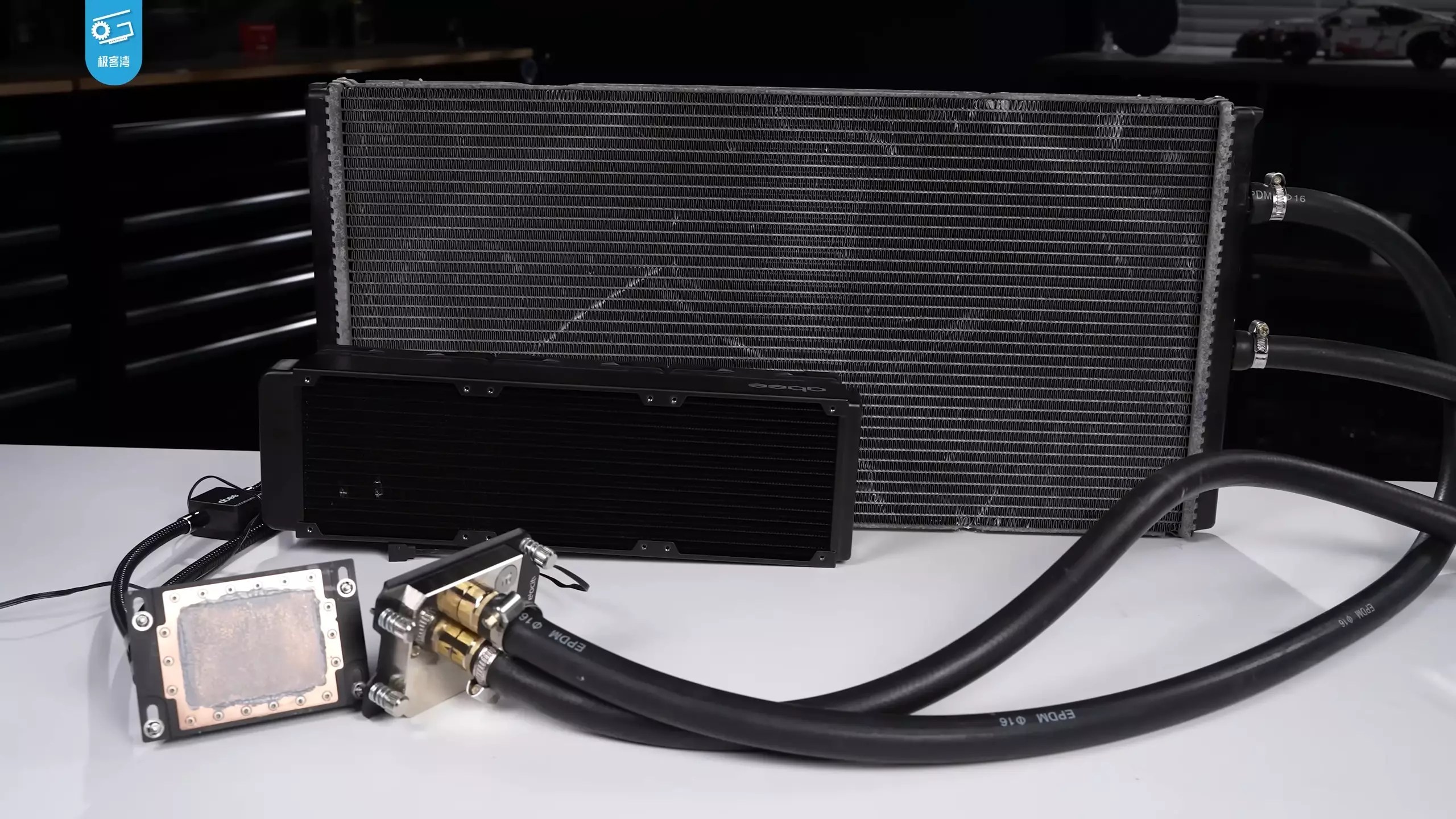In the realm of high-performance computing, cooling systems have traditionally been optimized for specific purposes: air coolers, custom liquid loops, or exotic setups like liquid nitrogen. But what happens when the boundaries are pushed further, crossing into the realm of unconventional methods? The recent experimentation by a creative team on YouTube illustrates an audacious attempt to repurpose automotive cooling technology to tame some of the most powerful consumer CPUs. By using car radiators, automotive fans, and water pumps, they challenged the norms of thermal management, revealing both the potential and peril embedded in such unorthodox approaches.
What stands out immediately is the boldness of substituting high-end PC cooling components with off-the-shelf car parts. Their motivation? To answer a provocative question—could a car radiator be more effective than traditional liquid cooling solutions for an overclocked, high core-count CPU? The assumption that automotive cooling equipment might outperform bespoke PC solutions is inherently flawed but tantalizing enough to warrant experimentation. The initiative uncovers a mental shift from conventional thinking, where the limits of existing PC cooling are questioned, and the ingenuity of hybrid solutions is tested against the relentless demand for better thermal management.
The Challenge of Overclocking the AMD Ryzen Threadripper 9995W
The centerpiece of this experiment is the AMD Ryzen Threadripper Pro 9995W, a chip that epitomizes power and complexity. Its 96 cores and the ability to draw well over 1,000 watts inside a consumer-oriented chip create an enormous heat load that challenges even the most sophisticated cooling solutions. Under typical circumstances, such a beast demands custom water loops or even extreme measures like liquid nitrogen to push frequencies beyond factory limitations.
The team attempted to push this processor to a nearly herculean 4.9 GHz across all cores—a feat rarely achieved outside of professional overclocking labs—using their hybrid car radiator setup. While the figures don’t match those set by extreme cooling methods (such as LN2), the fact that such a bulky, makeshift system managed to sustain stability at that clock speed is a testament to their ingenuity. It hints at an underlying truth: conventional PC cooling methods have physical limitations, and sometimes, unconventional solutions can scrape a little extra performance from hardware—a notion that’s both exciting and risky.
The Technical and Practical Hurdles
Despite the inspiring achievements, the experiment is rife with shortcomings that make it clear this isn’t a workable solution for everyday or even enthusiast use. The sheer size of a car radiator, even one designed for a performance car like a BMW M4, makes installation and space management in typical PC cases almost impossible. The hardware was a Frankenstein’s monster, cobbled together with car fans sourced from a seafood market—an improvised choice driven by necessity, not practicality.
Power consumption figures of over 2,000 watts during peak operation expose another glaring issue: such a system is inefficient and energy-intensive. It also introduces issues of controlling the cooling efficiency—fans draw massive amounts of power themselves, and heat dissipation remains uneven because the radiators operate at only partial capacity given the mismatch between heat load and radiator performance. Furthermore, the use of automotive water pumps and radiators complicates maintenance and reliability, emphasizing that this is more of a showcase of experimental spirit than a serious upgrade path.
Lessons in Innovation and Risk
While the attempt may seem like a foolhardy endeavor, it offers valuable insights. It underscores the limits of current PC cooling technology and inspires engineers to think beyond the box. It also exemplifies a principle deeply embedded in engineering: pushing boundaries, even if ultimately impractical, yields lessons that shape future innovations. The experiment’s success in stabilizing a near-maximum overclock on such a demanding CPU demonstrates that hybrid solutions—however cumbersome—can sometimes eke out marginal gains.
Yet, these gains come with peril. The experiment’s instability and massive power draw highlight that such setups are neither energy-efficient nor sustainable, especially outside controlled environments. This effort reminds us that overclocking and extreme cooling strategies are inherently risky, balancing on the edge of hardware stability and longevity.
Ultimately, although the idea of using a car radiator for CPU cooling remains an intriguing novelty, it confirms what many seasoned enthusiasts already suspect: practical, reliable, and safe cooling solutions are essential for everyday use. Nonetheless, daring experiments like this invigorate the community, encouraging innovation not just within the constraints of current technology but in imagining future possibilities—even if, in the end, they serve more as proof-of-concept than practical solutions.


Leave a Reply